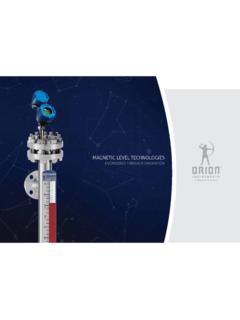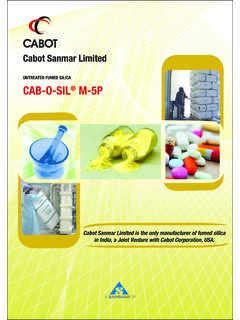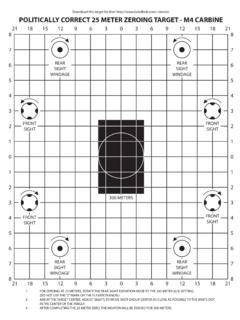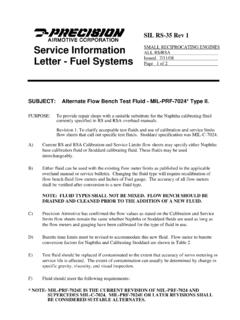Transcription of UNDERSTANDING SAFETY INTEGRITY LEVEL
1 UNDERSTANDING SAFETY INTEGRITY LEVEL . S p e c i a l A p p l i cat i o n S e r i e s 2. THE NEW STANDARDS IN SAFETY . On the morning of 12/11/05, the largest detonation since the end of WWII rocked the Buncefield Petrol Depot north of London. 72 million gallons of fuel ignited causing a shock that registered on the Richter scale. Catastrophic events like Buncefield, Texas City and Bhopal are what the informa- tion in this brochure is meant to prevent. The New Standards in SAFETY Protecting People Profitability Productivity Buncefield and the Environment Petrol Depot Explosion I. ndustrial SAFETY in pre-digital eras centered mainly around safe work practices, hazardous materials control, and the protective armoring.
2 Of personnel and equipment. Today, SAFETY penetrates far deeper into more complex manufacturing infrastructures, extending its protective influence all the way to a company's bottom line. Contemporary SAFETY systems reduce risk with operational advancements that frequently M I L E S T O N E. improve reliability, productivity and profitability as well. TUV (Bavaria) Microcomputers in SAFETY -Related Systems (1984) Nothing is more important than SAFETY to the process control industries. High temperature and pressure, flammable and toxic materials are just Health & SAFETY Executive (UK): some of the issues faced on a daily basis. Reliability is a key component Programmable Electronic Systems in SAFETY Related Applications (1987) of SAFETY ; the more reliable the device, the safer the critical process.
3 After years of work by the ISA SP84 committee, IEC 61508 and IEC 61511. OSHA (29 CFR ) (1992): have recently come together to yield a SAFETY standard that the world is Process SAFETY Management of embracing. IEC 61511 is particularly important as it is written specifical- Highly Hazardous Chemicals ly for the Process Industries. This standard quantifies SAFETY issues as never before. Although the SAFETY issues addressed are critical to users Instrument Society of America ANSI/ISA 84 (2004): with installations like Emergency Shutdown Systems (ESD), the reliability SAFETY Instrumented Systems for defined in this specification is being used by all users to separate great the Process Industries products from good ones.
4 SIL ( SAFETY INTEGRITY LEVEL ) and SFF (Safe Failure Fraction) are two of the key values that customers can use as an International Electrotechnical objective comparison of instrument reliability from various suppliers. Commission (1998-2003). IEC 61508 (2000): A general Reliability. Although this brochure targets SAFETY applications and instal- approach to Functional SAFETY Systems lations like Emergency Shutdown Systems, more than 90% of all applica- IEC 61511 (2003): Process sector implementation of IEC 61508. tions are not SAFETY -related. Those people are now using the SIL data as an indicator for reliability, , the better the numbers, the more reliable the instrument.
5 3. UNDERSTANDING Risk. All SAFETY standards exist to reduce risk, Figure A. which is inherent wherever manufacturing or processing occurs. Layers of Protection*. The goal of eliminating risk and bringing about a state of absolute SAFETY is not attainable. More realistically, risk can be categorized as being either negligible, tolerable or unacceptable. The foundation for any modern SAFETY system, then, is to reduce risk to an accept- able or tolerable LEVEL . In this context, SAFETY can be defined as freedom from unacceptable risk.. The formula for risk is: RISK = HAZARD FREQUENCY x HAZARD CONSEQUENCE. Risk can be minimized initially by inherently safe process design, by the Basic Process Control System (BPCS), and finally by a SAFETY shutdown system.
6 Layered Protection. Much evaluation work, including a hazard and risk assessment, has to be performed by the customer to identi- fy the overall risk reduction requirements and to allocate these to independent protection layers (IPL). No single SAFETY measure can eliminate risk and protect a plant and its personnel against harm or mitigate the spread of harm if a hazardous incident occurs. For this reason, SAFETY exists in protective layers: a sequence of mechanical PREVENTION LAYERS. In-plant response layers devices, process controls, shutdown systems and external response Prevent hazardous occurrences. measures which prevent or mitigate a hazardous event.
7 If one pro- tection layer fails, successive layers will be available to take the process to a safe state. If one of the protection layers is a SAFETY instrumented function (SIF), the risk reduction allocated to it deter- mines its SAFETY INTEGRITY LEVEL (SIL). As the number of protection layers and their reliabilities increase, the SAFETY of the process increases. Figure A shows the succession of SAFETY layers in order of MITIGATION LAYERS. their activation. External response layers Mitigate hazardous occurrences. Hazards Analysis. The levels of protective layers required is deter- mined by conducting an analysis of a process's hazards and risks known as a Process Hazards Analysis (PHA).
8 Depending upon the complexity of the process operations and the severity of its inherent risks, such an analysis may range from a simplified screen- *The above chart is based upon ing to a rigorous Hazard and Operability (HAZOP) engineering a Layers Of Protection Analysis study, including reviewing process, electrical, mechanical, SAFETY , (LOPA) as described in IEC. 61511 part 3 Annex F. instrumental and managerial factors. Once risks and hazards have been assessed, it can be determined whether they are below accept- able levels . If the study concludes that existing protection is insuffi- cient, a SAFETY Instrumented System (SIS) will be required.
9 4. SAFETY Instrumented Systems (SIS). The SAFETY Instrumented System (SIS) plays a vital role in providing a protective layer around industrial process systems. Whether called an SIS, emergency or SAFETY shutdown system, or a SAFETY interlock, its purpose is to take process to a safe state when pre-deter- mined set points have been exceeded or when safe operating conditions have been transgressed. A SIS. is comprised of SAFETY functions (see SIF below). with sensors, logic solvers and actuators. Figure B. shows its basic components: Sensors for signal input and power Input signal interfacing and processing Logic solver with power and communications Output signal processing, interfacing and power Actuators (valves, switching devices) for final Figure B control function Process schematic showing functional separation of SIS SIF: SAFETY Instrumented Functions.
10 A SAFETY Instrumented (red) and BPCS (blue). Function (SIF) is a SAFETY function with a specified SAFETY INTEGRITY LEVEL which is implemented by a SIS in order to achieve or maintain a safe state. A SIF's sensors, logic solver, and final elements act in concert to detect a hazard and bring the process to a safe state. Here's an example SIS SIF SIL of a SIF: A process vessel sustains a buildup of pressure which opens a R E L AT I O N S H I P vent valve. The specific SAFETY hazard is overpressure of the vessel. When pressure rises above the normal set points a pressure-sensing instrument detects the increase. Logic (PLC, relay, hard-wired, etc.)










